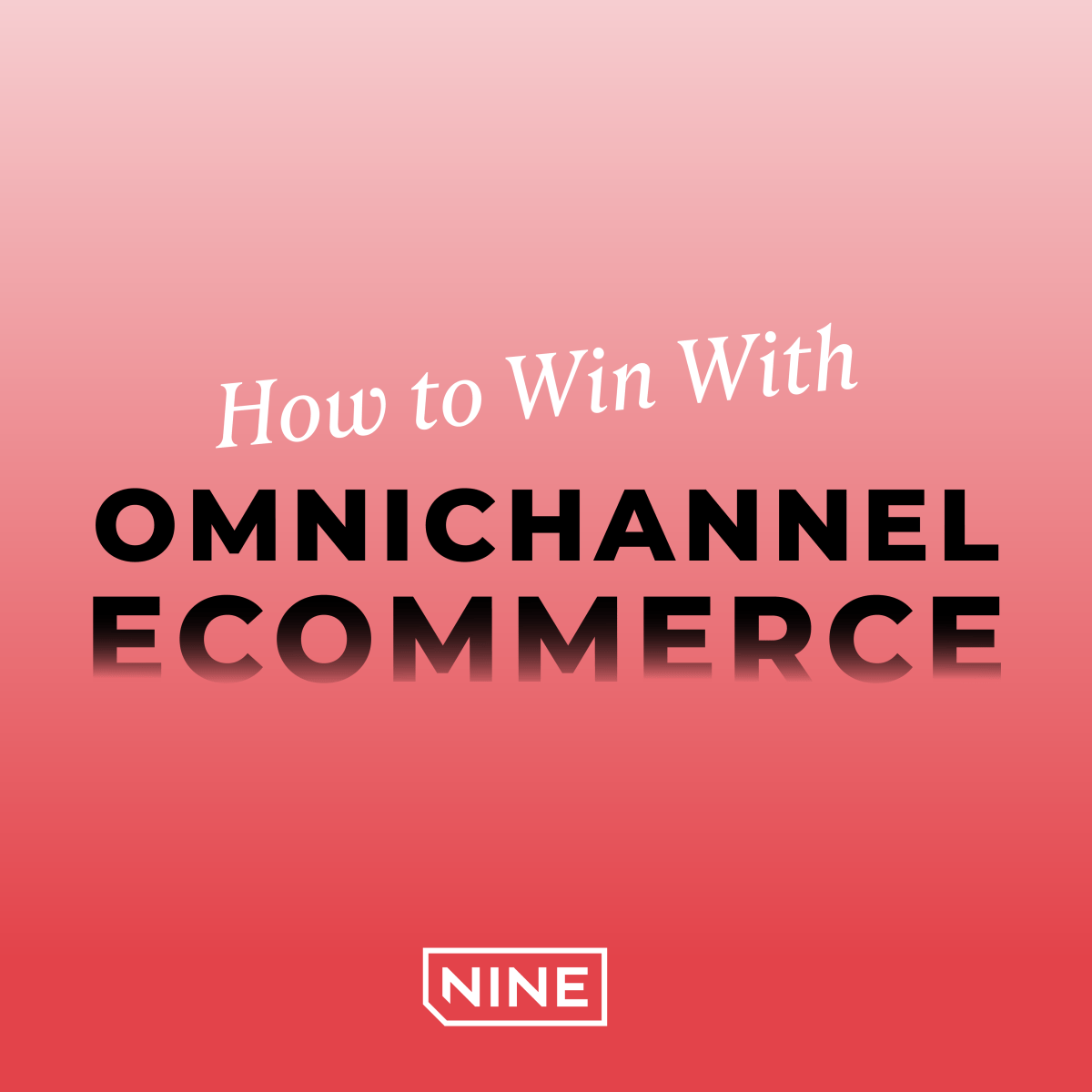
How To Win With Omnichannel Ecommerce
We’ve all read about how industry-disrupting brands leveraged their website to catapult into ecommerce greatness. Those are fun stories to read, but they differ from the experience most brands have.
What happened to running a targeted social media ad campaign and laughing all the way to the bank? Acquisition costs and data privacy changes, that’s what happened. Before changes in privacy laws, ecommerce brands could pinpoint their target customer with a message that made people take action. Today, the time to profitability should be shorter for most brands to see a profit.
Now more than ever, Ecommerce brands cannot depend on a single channel for their success. Instead, online retailers need to engage in Omni or, at the very least, multichannel ecommerce. This article will teach you what omnichannel commerce is and how you can approach it with a digital strategy.
What is Omnichannel Ecommerce?
An omnichannel approach to ecommerce uses various digital channels where customers can purchase your products. As we enter ecommerce web 3.0, the opportunities to sell your products are growing, and being ahead of the curve allows you to capture market share before the competition.
There is give and take with omnichannel commerce. You must relinquish some of the upfront profits for the ability to present your products in new terrains. The take in this relationship is that customers will find your products faster, and they will more frequently see you than in a single-channel or multichannel commerce approach.
Omnichannel VS. Single Channel
The argument against a multi or omnichannel approach is in the amount of complexity it brings. And this is true. Single-channel marketing is easier to manage. A single sales channel is a good fit for someone who wants passive income and performs marketing through organic methods such as social media posting.
But the single-channel approach could be better for companies looking to scale. At some point, every company needs to invest in offline or digital marketing to help bring more awareness to their products. Once you reach this point, stepping into the arena where omnichannel commerce exists is how you keep your numbers moving upward.
Omnichannel VS. Multichannel
Tony Robbins says that you have no choice at all if you have one choice. If you have two options, you have a dilemma. Only when you have three choices are you indeed able to choose. Multichannel marketing may be better than a single channel, but you need help deciding which to prioritize.
While before, you could between multichannel commerce and omnichannel commerce, advancements in social commerce make it nearly impossible for brands to succeed without three or four channels. Social media companies want a bigger slice of the pie and in return will give you more access to their audience.
Are you ready for this?
Online & Offline Omnichannel Strategy
In this competitive commerce climate, even if only committing to multichannel, you need to understand marketing and relationship building with the retailer operating and running a physical store. On-premise & online store sales are becoming more synchronized, and ecommerce brands need to understand their symbiotic relationship.
7 Benefits to Omnichannel Ecommerce
Have we convinced you to take an omnichannel approach yet? If not, here are a few surprising reasons omnichannel is the best strategy for ecommerce brands.
Customer lifetime value: Your brand will experience greater per-customer revenues when you are available in more than one online store.
Customer Journey: Especially true for Gen-Z; the customer journey no longer exists in one location. Now, shoppers want to find your products across various online channels.
Customer Acquisition Costs: The cost to acquire a customer is lower when you are available through various channels.
Improved Customer Analytics: Social selling and fulfillment websites have access to different customer data sets that will help you make better business decisions in the future.
Broader Customer Engagement: Each channel will have a unique consumer demographic with different interests. Being available on more channels means access to more customers you hope to find. For example, 10x the number of people searching for a baby car mirror on Amazon than on Google. You are losing a sizeable chunk of the market if you are only selling on your website.
Customer Loyalty: This might be surprising, but customer loyalty improves when you are available on different channels. We see this based on the number of people recommending your products to other shoppers.
Diversification: We know this from investing, but having a diversified channel portfolio protects you during economic shifts, just as we are experiencing right now.
The benefits of omnichannel retailing continue to unfold, and as marketing automation improves, we will see even more reasons for brands to take this approach. The ones who do not will end up scratching their heads, wondering why their profits keep slipping away.
What You Need to Execute an Omnichannel Strategy
For those who have put their hands up and said, “I’m in,” let’s talk about what you need to execute an omnichannel strategy. The good news is that you can take it one thing at a time.
To start, you will need an ecommerce platform (such as Shopify Plus) that recognizes the future of ecommerce and permits omnichannel retail. Shopify is so committed to omnichannel retail they are launching universal search, where shoppers can look for products across their entire client base.
As you grow, you will need an accounting system that can handle various revenue streams. We won’t make an official recommendation, but you should be sure that you have a system set to provide accurate revenue reports across various channels.
When committing to scale, you can invest in an omnichannel analytics tool such as MikMak. The enhanced reporting will give you details to help you improve performance directly on the reporting channel and across your other channels.
Who Should Take An Omnichannel Approach?
Brands with lower-ticket items and “product-aware” customers are ready to move their ecommerce business into the omnichannel experience. An omnichannel approach is best for CPG and FMCG companies if they hope to grow their business continuously and profitably.
Who Shouldn’t Take An Omnichannel Approach?
Apart from lifestyle brands where people either work jobs or are less interested in scaling a business, some brands may want to hold back on an omnichannel approach. Brands with high-ticket items, low acquisition costs, and new-to-market offerings may focus on their direct website until the point of market saturation. Especially when you have limited available quantities of your product.
Creating Your Omnichannel Marketing Strategy
Asking an ecommerce retailer to stock your products or signing up for a retail marketplace is not going to be enough to succeed with omnichannel ecommerce. You will need to think through the following omnichannel ecommerce strategies if you want to make more money and prevent resources from being spread thin.
Address the potential supply chain issues, including lead times, loss rates, and payment terms.
Think about your marketing plan through every channel lens and how you can integrate your marketing plan to support each channel.
Strategize each of your on-channel marketing efforts to encourage immediate sales performance.
Designate the right team members for the proper role. Jim Collins, the right seat on the bus theory, works well here.
Consider how you can improve the user experience even though you may not fully control each platform.
Create an omnichannel reporting calendar where you can review customer and product data.
Identify ways to create a personalized experience when people shop for your products off your website.
Omnichannel Ecommerce Best Practices
We want you to win with omnichannel commerce; to do so, you must follow the best practices laid out by ecommerce companies who have come before you. Here’s a look at three ways to ensure your brand succeeds with omnichannel.
Identify Your Why
The goal of every for-profit company is to make money. Denying this truth is to deny the benefits of the free market. But to make more money in the long term, you need a different “why” for each business decision.
Choosing to go onto a channel because you can make more money will often lead to making less. When considering which tracks to include, determine a more valid reason for doing business on these digital platforms. Understanding your “why” helps you develop a stronger relationship and more precise ways to market to this audience.
Create a strong brand message
If your company (and product) carries a weak brand message, expect an omnichannel experience to be painful. You will become frustrated at how competitors move in and swipe your sales, how these channels present and promote your products and the customer retention you receive.
Don’t Be Afraid to Quit
Staying in a channel that is not benefiting your business isn’t honorable or profitable. You have plenty of options for your omnichannel ecommerce business, so let one go if it allows you to pick up a better partner.
Digital Marketing For Ecommerce Brands
The Nine is a digital marketing agency committed to helping ecommerce brands grow their business. We can help you develop and execute an omnichannel ecommerce strategy that is right for you. Book a time to discuss your ecommerce needs with our digital marketing specialists.

